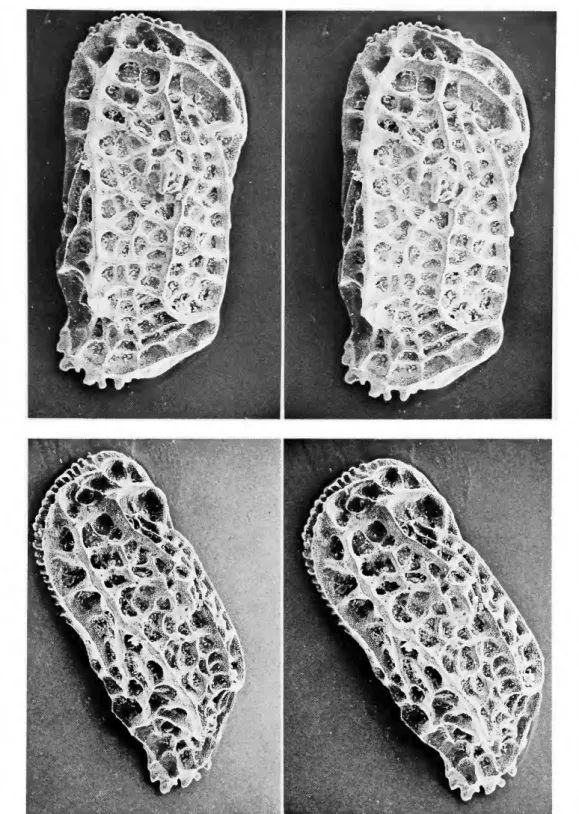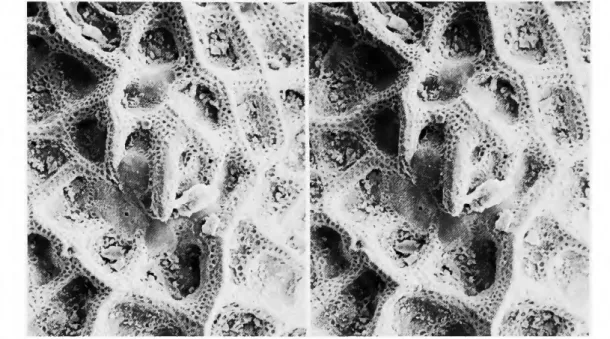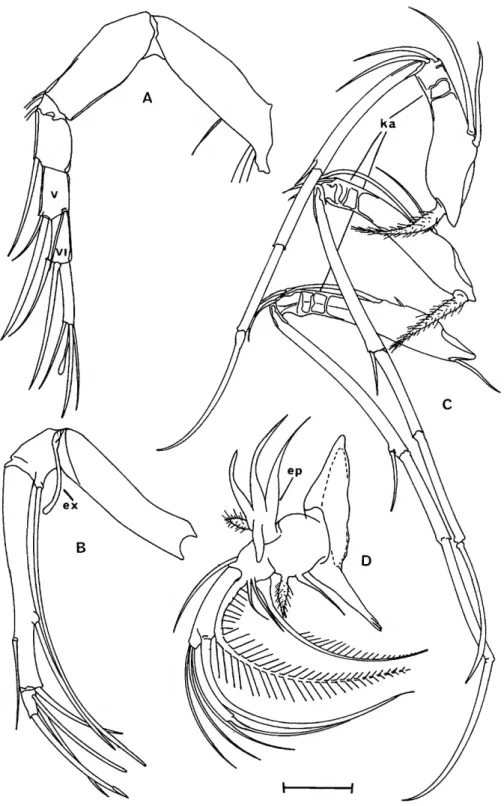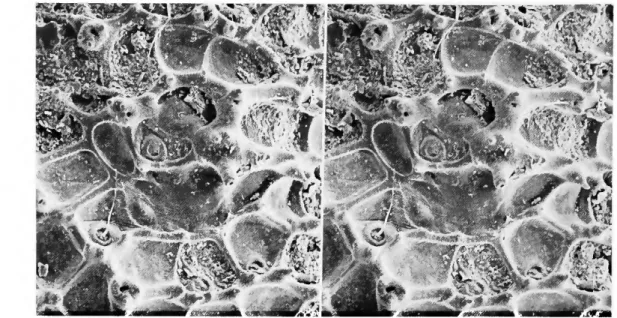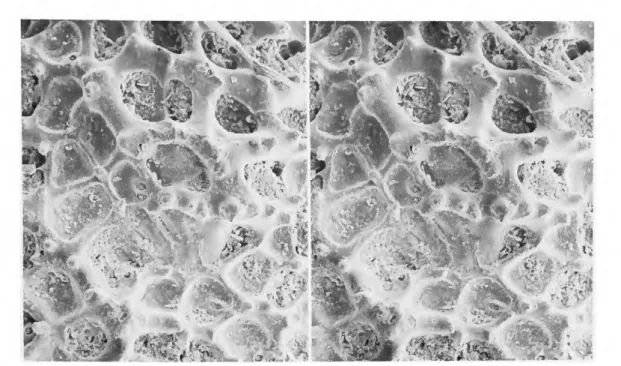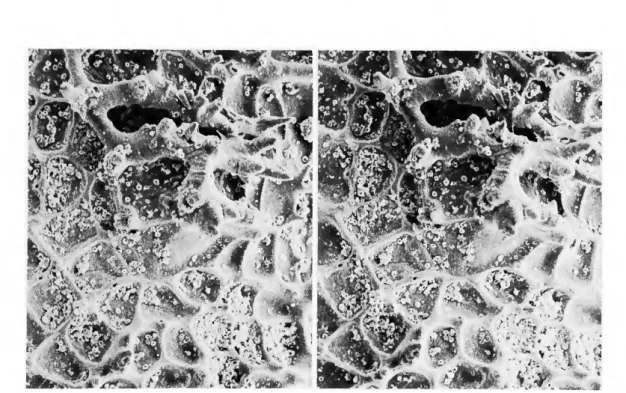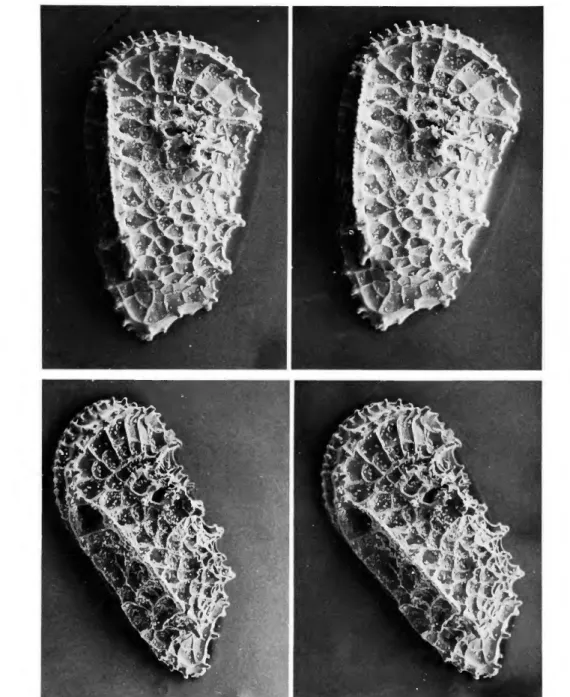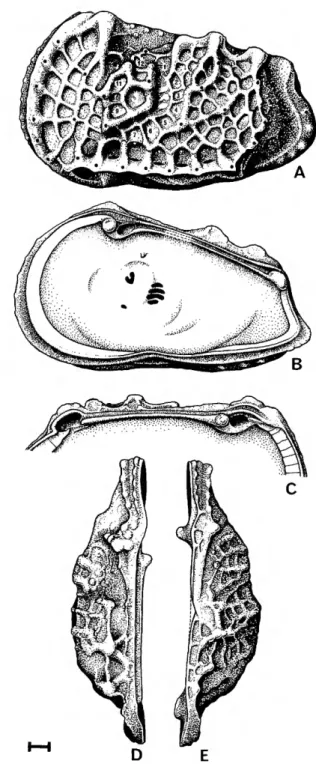Kadot of the University of Kansas (Southern Ocean sample), Francis Parker of the Scripps Institution of Oceanography (cores from the Pacific), H. However, the frontal scars and details of the reticular patterns (from what I can observe of the patterns shown in Uliczny 1969 ) are different. In his description of the Upper Cretaceous (Turonian) form Oertliella, Pokorny (1964a) makes a brief passing remark about its similarity to Hermanites Puri (not known to me to be older than Eocene), although he didn't know. that both had different frontal muscle scars (divided J-shaped in Hermanites and V-shaped in Oertliella).
The main pore conuli (indicated by zodiacal and Greek names), some of the solar sieve pores and the dorsal bullar series (a, b and c). B) The arx of the castrum (with part of the ballial series) showing the specula, the porus castri and the muscle scar pattern (not indicated by arrow), (c) A dorsal schematic drawing of the hinge (with arrow pointing forward), (D) The muscle scar pattern with the mandibular (m), frontal (f) and adductor scar group (a) indicated. By tracing the various variations in the morphology of the castrum, it seems likely that A. An example is found in the cellation characteristic of the species Bradleya arata (Brady, 1880), the type species of Bradleya.
Either the developmental process continued to completely fill in the reticulum of the ancestors of B. Skarnier: Holamphidont with only slight indications of location in the lower part of the posterior tooth. The castrum (Latin, fort) consists mainly of an outer wall ring (wall) that defines the outer limits of twelve fossae (numbered clockwise, one to twelve) of the ballium.
If the wall of the inner castrum (inside the ballium) rises, they form a visible, often H-shaped structure called the arx (inner or principle fortress).
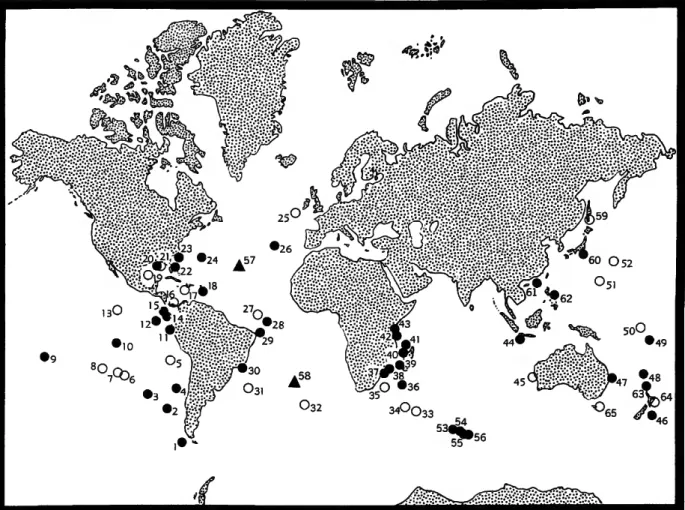
A. spinosa
TYPE-LOCALITY.—Gulf of Mexico, southeast of Mississippi River Delta near U.S. Agrenocythere is blind (assuming it again evolved as a deep-sea genus) and began to develop several new characteristics (a castral complex, for example), as well as loss of the eye tubercle. First data on the Ostracod biostratigraphy of the Possagno and Brendola sections (Paleogene, ne Italy).
Stanley, redacteur, Proceedings of the Symposium on Sedimentation in the Mediterranean Sea (in voorbereiding).
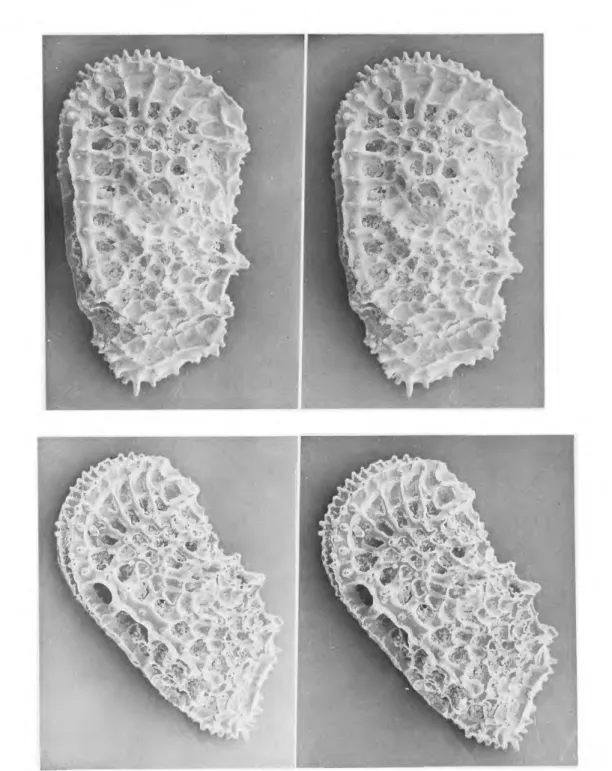
Appendix: Distribution Data
DWBG 70
Grab Grab Grab Grab Grab Grab Grab Grab Grab pulls pull pull pull Grab pulls pull pull pull pull wall pull pull pull pull pull wall. Recent Recent Recent Recent Recent Recent Recent Recent Recent Recent Recent Recent Recent Recent Recent Recent Recent Recent Recent Recent Recent.
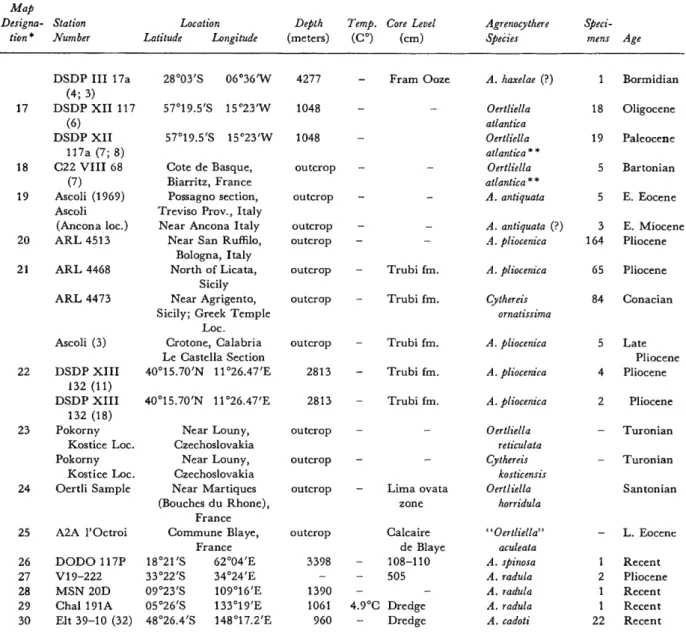
PLATES
The left valve (of a whole specimen, separated for examination) from Brady's Challenger site "off the reefs off Honolulu, 40 fathoms." Photographs (vegetable color spot) taken in incident and transmitted light showing (1) reticular pattern with castrum, (2) external morphology of the carapace, (3) holamphidont hinge and (4) V-shaped frontal scar (with posterodorsal part slightly cut off). Limburgina quadrazea (Hornibrook, 1952), a left male valve (USNM 174679), from the upper Paleocene Tioriori Limestone (Mangaorapan), Chattam Islands, New Zealand (New Zealand Geol. This species contains several features that identify the ancestral group of several genera discussed in the text.
Bradleya species, left valve (USNM 174680) of an as yet unnamed species of Bradleya from the latest of New Zealand (NZOI E258, lat. Bradleya species, an entire female specimen (USNM 174682) from the Upper Paleocene, Tioriori Limestone, from Chattam Islands, New Zealand (locality same as for specimen on plate 1: . figure 6) transitional form between Bradleya and Limburgina (x70). Hermanites reticulata (Puri, 1954); one of the two right valves saved by Puri as para - types (USNM P3286) of the type species Hermanites.
Cletocytereis species, left valve (USNM 174693) from Wynyard Beach (Recent) of northern Tasmania, more massive and shorter than the type species (x85). Poseidonamicus major?, new species, left valve (USNM 174695) of a coarse variant of this species (possibly female) of Miocene age (Messinian) from the South Atlantic (DSDP I I I 16, core 8, section 3) (x65 ). Reticular silhouettes of eight variations of Agrenocythere, new genus, with positions of pore-conuli (dots) indicated.
All illustrations reduced approximately to regular size.] This series (and Plates 5 and 6) shows the degree of similarity of main features among the forms below and fundamental changes in allometry. Reticular silhouettes of eight variations of Agrenocythere, new genus, with positions of pore conuli (dots; plate 4), fossal pattern and star structure (plate 6) indicated. Bradleya albatrossia, new species; left valve adult; note the boldness of the muri, though no center back or front bridge; Most recently, the China Sea off Hong Kong; Albatros station 5301, lat.
Bradleya japonica, new species; left valve adult with naked anterior marginal area, wide ventrolateral carina and irregular murate development; Recently: Albatross Station 3708 off Honshu Island, Japan, 60-70 fathoms; holotype USNM 174320 (x50). Bradleya andamanae, new species; adult left valve with a very coarse reticulum forming a median rim that traverses the entire length of the lateral side, a posterior ventral segment of the bridge, and an optic tubercle; Recently, oceanographer station OSS-01, 260G in the Andaman Sea, lat. Bradleya mackenziei, new species; left valve mature, a small form with prominent and sharp ocular, dorsal and ventrolateral carinae and remnants of the bridge, fossae quite angular to "ragged", optic tubercle; Recently from Australia, Bass Strait, McKenzie sample M290; holotype USNM 174324 (x65).
Bradleya paranuda, new species; left valve mature with produced anterior, smooth surface, except for remaining traces of reticular pattern extending from the dorsal and ventral carinae and two near the posterior; Recently, Albatross Station ALB 5250, Davao Gulf, Philippine Islands, lat. Jugosocytheris species; left valve of adult showing a well-developed bridge developed from the muscle scar node area anteriorly, the posterodorsal loop formed by dominant muri, and the similarity of the reticular pattern to that of Bradleya; Recent, Indian Ocean, Grand Comoro Island, 12 meters; USNM 174333 (x65). Bradleya (Quasibradleya) dictyonites, new species (for B. dictyon from Hornibrook); adult left valve with strong ocular-ventrolateral and dorsal carinae, "ears" posterodorsum, optic tubercle, disjoint median border and remnants of the lower part of the bridge; upper Oligocene (Awamoah), New Zealand, Old Rifle Butts section, Hornibrook locality F6487; USNM-174328.
Poseidonamicus major, new species; an enlarged left valve with thickened vertical wall and enlarged muscle knot with scraping; Lower Miocene, South Atlantic, DSDP I I I , Hole 15, core 8, section 3 (see Table 2 ), holotype USNM 174329 (x65). Agrenocyther americana, new species, paratype USNM 174363, from ALB 2383, Gulf of Mexico; (6) external view of left valve of male paratype; (10) external view and (13) internal view of right valve of male paratype; (11) external view and (14) internal view of right valve of female paratype; (12) external view and (15) internal view of left valve of female paratype. Agrenocyther radula (Brady, 1880), designated lectoholotype (left valve, penultimate in star) from the original Brady material of the Challenger Expedition (BM 81.5.28) collected from station 191A, Ki Islands, southern Indonesia at 580 m depth is seen in (16) external lateral views, (17) external dorsal and (18) internal views.
Index
Manuscripts for serials are accepted by the Smithsonian Institution Press, subject to actual review, only through departments of the various Smithsonian museums. If submission is invited, the following format requirements for the press will govern the preparation of the copy. 1/?” top and left margins, submitted in carbon tape copy or duplicate and accompanied by the original artwork.
There can be several paragraphs on a page, but each page must start with a new paragraph. Identify the author on the first page of the text with an unnumbered footnote that includes his professional mailing address. An index, if necessary, can be provided by the author when he returns page proof.
For easy reference, also number the taxa and their corresponding headings throughout the text; do not incorporate page references in the key. In synonymy, use the short form (taxon, author, date:page) with a full reference at the end of the paper under "Literature Cited." Begin each taxon in the left margin with subsequent lines indented about three spaces. Simple tabulations in the text (eg columns of data) may or may not have headings, but they should not contain rules.
Official tables should be submitted as separate pages from the text, and each table, no matter how large, should be pasted as a single sheet of copy. Submit all legends on pages separate from the text and not attached to the artwork. A booklet with instructions for the preparation of illustrations is available on request from Tisk.
In the bibliography (usually called "Literature C i t e d "), spell out book, journal, and article titles, using initial capital letters with all words except small terms such as "and, of, the." For capitalization of titles in foreign languages, follow the national practice of each language. For free copies of his own paper, a Smithsonian author must indicate his requirements on "Form 36" (submitted to the Press with the manuscript). A non-Smithsonian author will receive 50 free copies; Order forms for quantities above this amount with instructions for payment will be provided when page proof is forwarded.
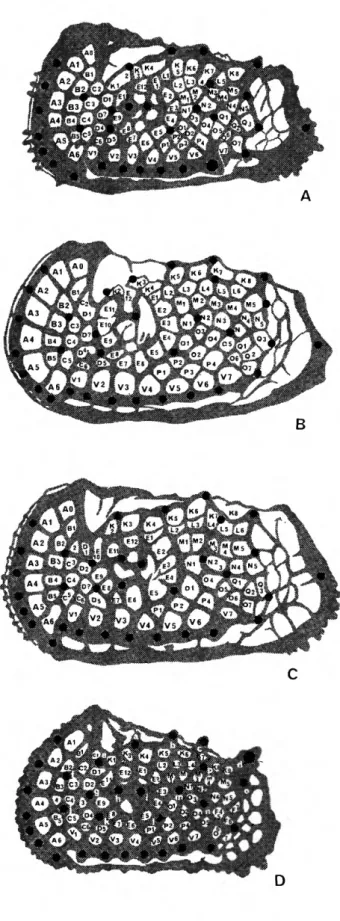
![Cythere dictyon Brady, 1880:99, pi. 24: fig. lh-i, 1, o, p, s, t, ii [not a-g, j , k, m, n, q, r, v-y].—Brady and Norman 1889:152, 244](https://thumb-ap.123doks.com/thumbv2/123dok/11201432.0/40.795.411.729.92.754/cythere-dictyon-brady-1880-fig-brady-norman-1889.webp)
